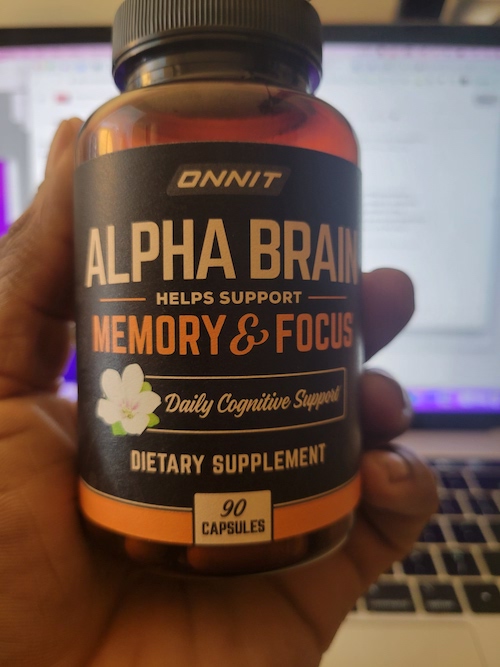I’m always looking for any advantage in boxing. I’m also always looking for ways to improve my health and live longer. It just so happens that at this point in my life, these two things heavily overlap.
I recently decided to rekindle my boxing career at the age of 40. So far, things are going well, as I scored a first-round knockout on July 12, 2025, in my first fight back.
In my quest to optimize my health, I’ve done everything from putting together an incredible list of supplements that most fighters aren’t taking but should to getting my health optimized with Rebel Health Alliance telehealth concierge service.
My formal academic training is in physics, but over the past decade or so, I’ve spent a lot of time studying biochemistry and biomechanics to fully understand any technology, practice, or supplement I come across that I think can help me continue fighting into my 40s.
When someone reached out to me about Grounding Sheets and Grounding Mats, explaining what they are and how they might give me an advantage, I was curious to learn more.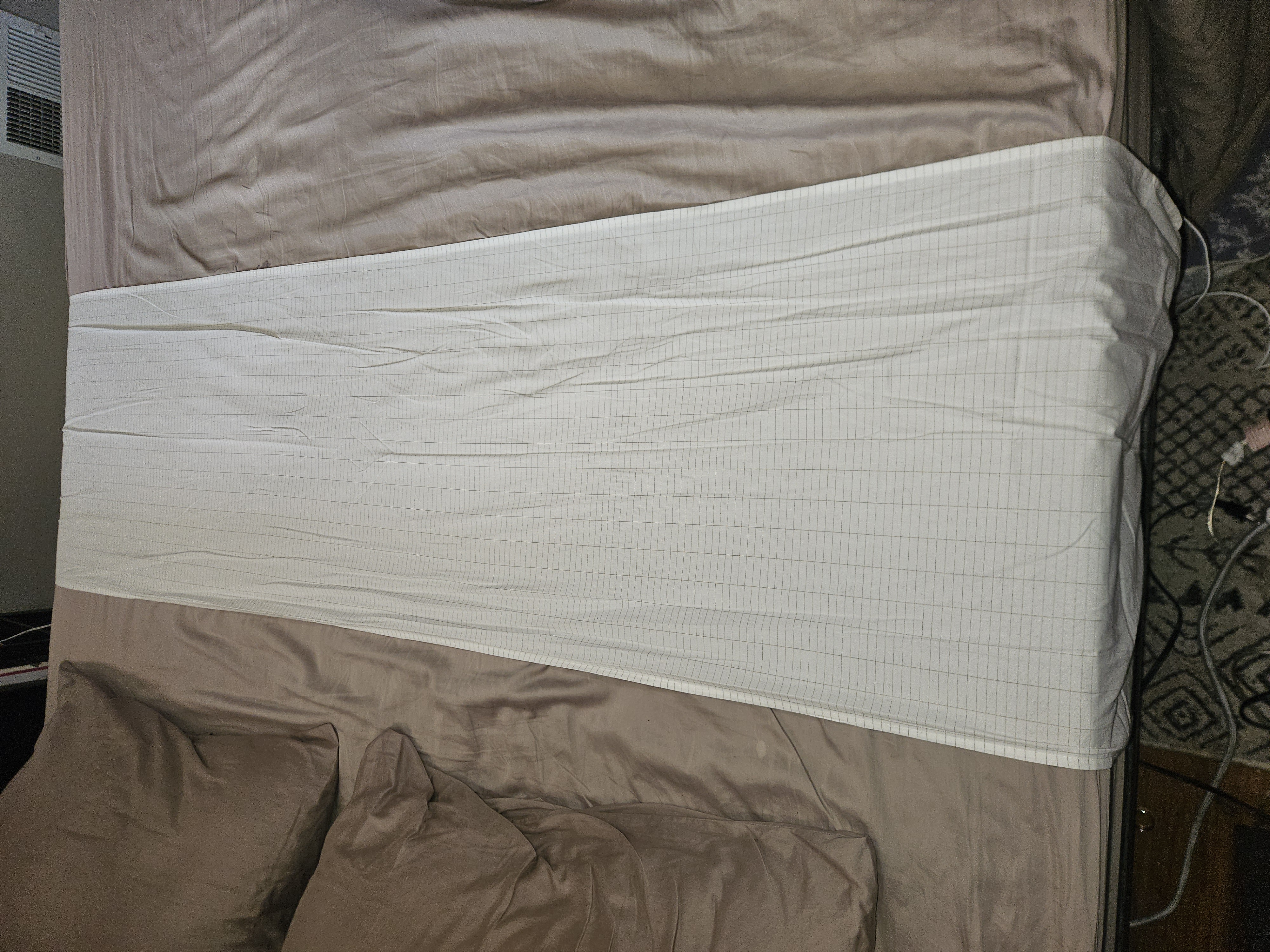
The concept of grounding, from a physics and biochemistry perspective, made perfect sense (we’ll get into that shortly), but one thing I’ve learned in science—and in life—is that just because something should work doesn’t mean that it does.
Through this article, there will be “Physics notes about grounding” that will dive deeper into the interesting concepts behind grounding, but are not necessary to know. You can skip them if you want to, but I’ve included them for those who really want to nerd out on the physics of grounding.
I not only conducted research into grounding technology, but I also purchased a grounding mat and a grounding sheet from Grounding Well.
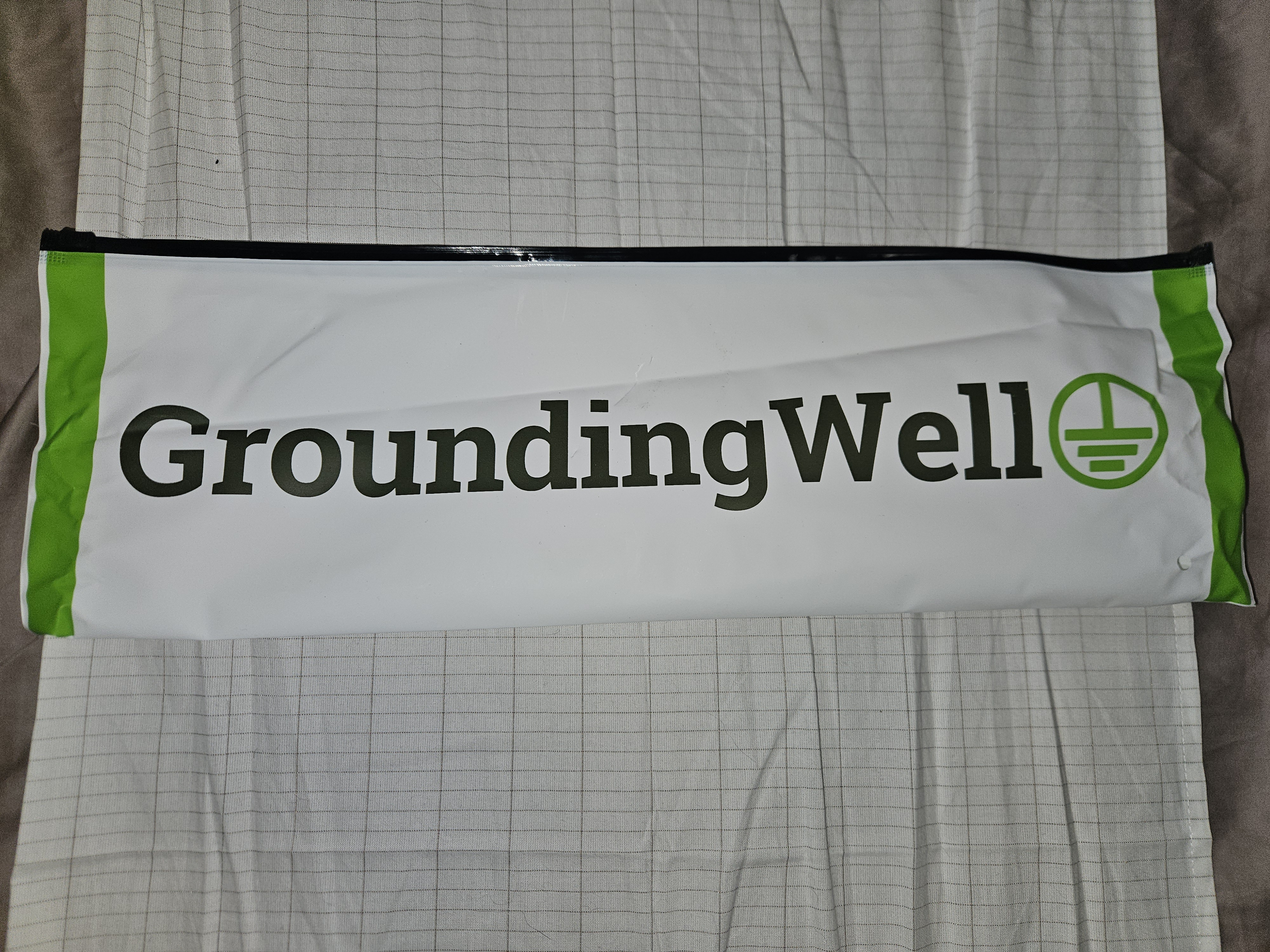 The rest of this article explains what grounding is and my experience using both a grounding sheet and a grounding mat.
The rest of this article explains what grounding is and my experience using both a grounding sheet and a grounding mat.
If you aren’t interested in any of the research and science behind grounding mats or grounding sheets, and you just want to read my review of my experience with the grounding devices, you can skip to the end of the article by clicking here.
If this article is helpful to you, I hope you will consider purchasing from Grounding Well using one of the links provided throughout this article. It allows me to get a small commission for helping you make an informed life-changing decision, and it costs you nothing.
FTC disclosure: This article contains affiliate links. If you purchase through them, I may earn a small commission at no extra cost to you.
What is Grounding (Earthing)?
Note: I’ll occasionally switch between the terms “grounding” and “earthing” throughout this article. They can be used interchangeably. I’ll use either one when referring to the practice of a person making contact with the Earth. When referring to electrical systems, I’ll use the term “electrical grounding.”
I provide a more in-depth treatment of the following section in my article, “How does Grounding Work?” You can click on the link here to read it, but the rest of this section covers the basics.
At its simplest, grounding is making direct contact with the Earth—skin on soil, grass, or sand—so that your body can receive electrons from the planet. This is where the practice’s other name—”earthing”—comes from..
The idea and the name come from the way electrical systems are set up for safety..
A Quick Physics Lesson on Electrical Grounding
 Most power outlets have two or three holes. The two main prongs are all that’s needed to power a device: one “hot” prong delivers current, and the neutral prong carries it back to the source. However, many devices also have a third prong, which serves as the ground.
Most power outlets have two or three holes. The two main prongs are all that’s needed to power a device: one “hot” prong delivers current, and the neutral prong carries it back to the source. However, many devices also have a third prong, which serves as the ground.
The grounding prong connects the device to the Earth. If a live wire ever touches exposed metal inside, that current takes the low-resistance escape route into the ground instead of through you. The breaker trips instantly, shutting down the circuit and preventing shock.
Why use the Earth as ground?
Because its volume is so large that it’s effectively an infinitely massive reservoir of charge,so adding or removing electrons doesn’t noticeably change its overall charge. This makes the Earth the ultimate safety net.
Key takeaways about electrical grounding:
- Electricity is the flow of electrons and always needs a complete path (circuit).
- Two prongs are enough for power, but the third (ground) is there for safety.
- The Earth is used as ground because it can absorb a lot of electricity without ever becoming charged.
How Does Earthing Work in the Body?
Biological grounding — or earthing — takes the same principle and applies it to you. Instead of stabilizing an appliance, it stabilizes your body.
Here’s an important idea to remember, and it is crucial to understanding how earthing works: electrons always flow from a lower electric potential (more negative) to a higher electric potential (more positive). Electricity is nothing more than the flow of electrons.
- Lower potential = more negative charge (more electrons)
- Higher potential = more positive charge (fewer electrons)
- Electrons always carry a negative charge, so they naturally move toward areas with a positive charge. This is why batteries that power electronics have a positive and negative terminal. Once they’re put into a device to complete a circuit, the charge is pulled from the negative end, through the circuit, to power whatever is attached to it, by the positive end.
Voltage, or electric potential, is like the pressure that pushes electrons. Think of it like water:
- Voltage is the pressure in the pipe
- Current is how much water is flowing
- Both together determine how much useful work gets done
By convention, the Earth’s surface is assigned a potential of zero volts. That doesn’t mean the Earth has no charge. It simply means that the Earth is the baseline against which we measure everything else. Think of it like sea level. The ocean isn’t empty, but we call it “zero feet” so we have a common reference point.
The reason the Earth works as this baseline is because it’s so massive. Any extra charge added or removed gets spread across the whole planet. It’s like pouring a glass of water into the ocean; it doesn’t noticeably change the sea level.
At the same time, the Earth’s surface holds an immense reservoir of free electrons. Compared to most insulated objects, including the human body, the Earth is effectively more negative. When you connect with it, electrons flow into you until your potential matches the Earth’s.
📘 The Physics Behind Grouding Note I:
Zero volts is a definition, not an absolute state. Engineers needed a universal reference point, and the Earth made the most sense because it’s stable, enormous, and can absorb or supply charge without changing its potential. That’s why electrical systems worldwide are tied into the Earth’s ground — it provides a common baseline for everything.
Speaking of engineers, I’m a physicist by training. This distinction may not mean much to most people, but when discussing the flow of electricity, it becomes important.
Engineers usually talk about conventional current flow — from positive to negative — because that’s the convention set long before electrons were discovered. Physicists, on the other hand, focus on what’s actually happening: electrons, which carry a negative charge, move from negative to positive. The math works out for both descriptions as long as you’re consistent, but it’s worth knowing the difference so you don’t get confused when one source seems to describe electricity flowing “backwards.”
📘 The Physics Behind Grouding Note II:
The Earth behaves like a giant conductor. Thanks to Gauss’s Law, the electric field inside a conductor at equilibrium is zero, and any excess charges are spread out evenly on the surface. That’s why the Earth’s surface acts like a vast reservoir of free electrons, ready to flow when you connect to it, even though we define its potential as zero volts.
Gauss’s Law explains how charges distribute themselves. Inside a conductor, the field cancels to zero, and charges migrate to the surface. A simple way to picture this is like a crowded dance floor: people naturally drift to the edges to give each other space.
The Earth works the same way — electrons spread to the surface. And because the Earth is such an enormous “dance floor,” it can always spare a few electrons without anyone noticing. When you ground yourself, it’s like stepping onto that dance floor: a few “dancers” (electrons) move over to you to even out the crowd, but the overall balance of the party (the planet) never changes.
The human body is disconnected from the Earth—and that’s bad
Modern life insulates the human body from the Earth. We wear rubber-soled shoes that block conductivity, live and work in buildings raised off the ground, and sleep on mattresses made of synthetic materials. All of these break the natural electrical connection that humans had for most of history.
When you’re disconnected like this, your body tends to lose electrons over time, leaving you relatively electron-deficient. This is why the body is often slightly positive compared to the Earth. A few things contribute to this:
- Static charge buildup: Everyday activities like walking on carpets, synthetic flooring, or even rubbing against clothes made of polyester and nylon can strip electrons from your body. Without a pathway to discharge into the Earth, this static builds up, leaving you at a higher potential.
- Electromagnetic exposure: We’re constantly surrounded by man-made electromagnetic fields (Wi-Fi, cell towers, household wiring). While the effects are debated, many researchers suggest that exposure can disrupt normal charge balance in the body, nudging it toward a net positive charge.
- Biochemical processes: Metabolic reactions inside the body naturally produce free radicals — molecules that are missing electrons. Normally, diet and antioxidants help neutralize them, but when you’re insulated from the Earth, you’re cut off from an additional natural electron source. Over time, this increases the body’s “electron debt.”
📘 The Physics Behind Grouding Note III: Why “Positive” = Electron-Deficient
In electricity, “positive” doesn’t mean “good” or “more.” It simply means there are fewer electrons relative to protons. Since electrons carry a negative charge, losing them leaves your body with a net positive charge. That’s why when you reconnect with the Earth — which is rich in free electrons — they flow into your body until the imbalance is corrected.
In simple terms, the human body tends to drift into a slightly positive state when disconnected from the Earth because we constantly lose electrons and rarely replenish them. When you finally touch the ground directly, electrons flow in from the Earth to restore balance.
When you connect to the ground, grounding let’s electrons flow
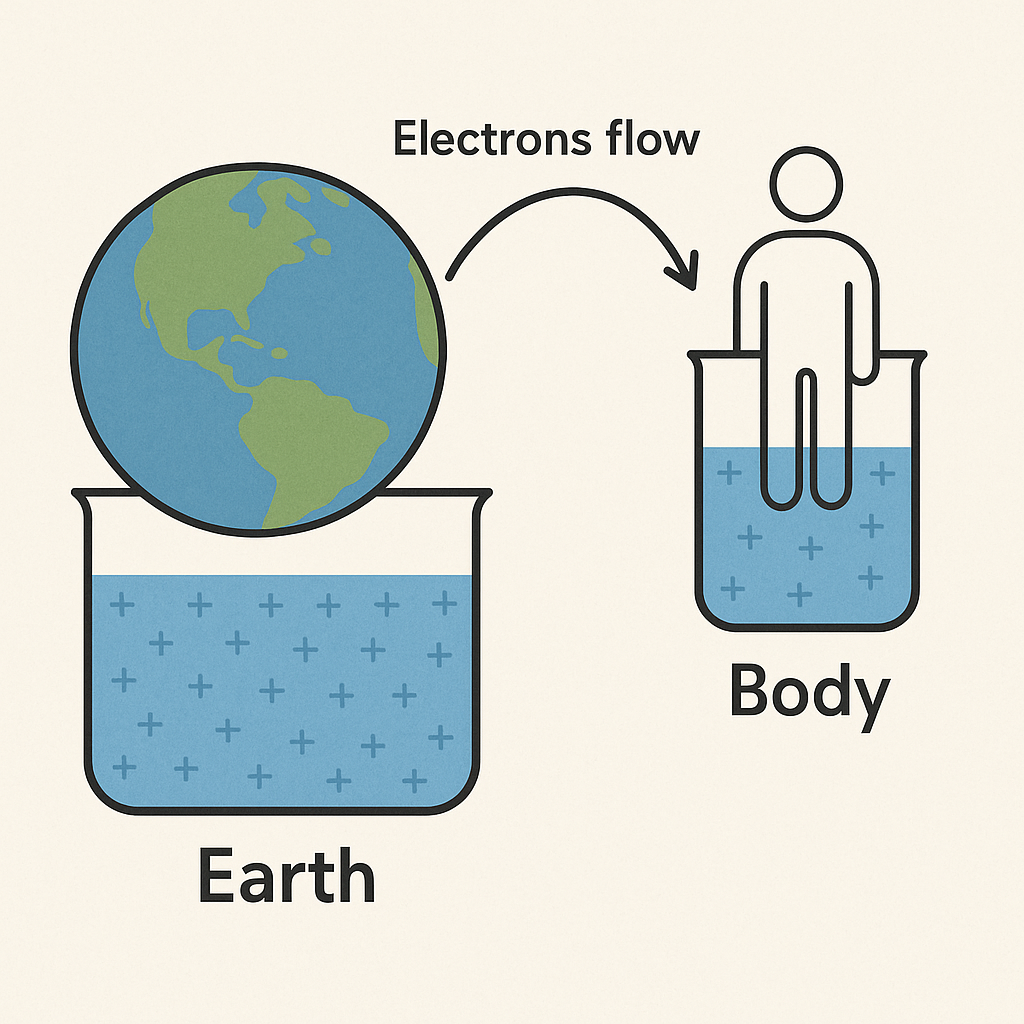 As soon as your bare skin touches the Earth, electrons naturally flow from the ground (more negative, lower potential) into your body (more positive, higher potential). They keep flowing until your body equalizes with the Earth. This flow of electrons is an established scientific fact (Chevalier, 2014)
As soon as your bare skin touches the Earth, electrons naturally flow from the ground (more negative, lower potential) into your body (more positive, higher potential). They keep flowing until your body equalizes with the Earth. This flow of electrons is an established scientific fact (Chevalier, 2014)
As stated in the notes above, the electrons all gather on the surface of the planet, so when your more positive body touches with bare skin, they flow through you.
Think of it like water levels: if the Earth is a giant lake and your body is a smaller tank sitting a little low, connecting them with a pipe allows water (electrons) to flow until both are level.
That’s all earthing really is — a simple equalization process. But those extra electrons aren’t wasted. Research suggests they act like antioxidants, stabilize your cells’ electrical activity, and reduce inflammation.
A review of the health benefits of grounding sheets and grounding mats
I dive more deeply into these listed health benefits of grounding in my article hereabout grounding. The following is a short summary, but you can read a more in depth analysis here.
Grounding isn’t just a theory — research shows that when your body equalizes with the Earth’s charge, it can trigger measurable changes in health. Here are the main benefits that have been reported and studied.
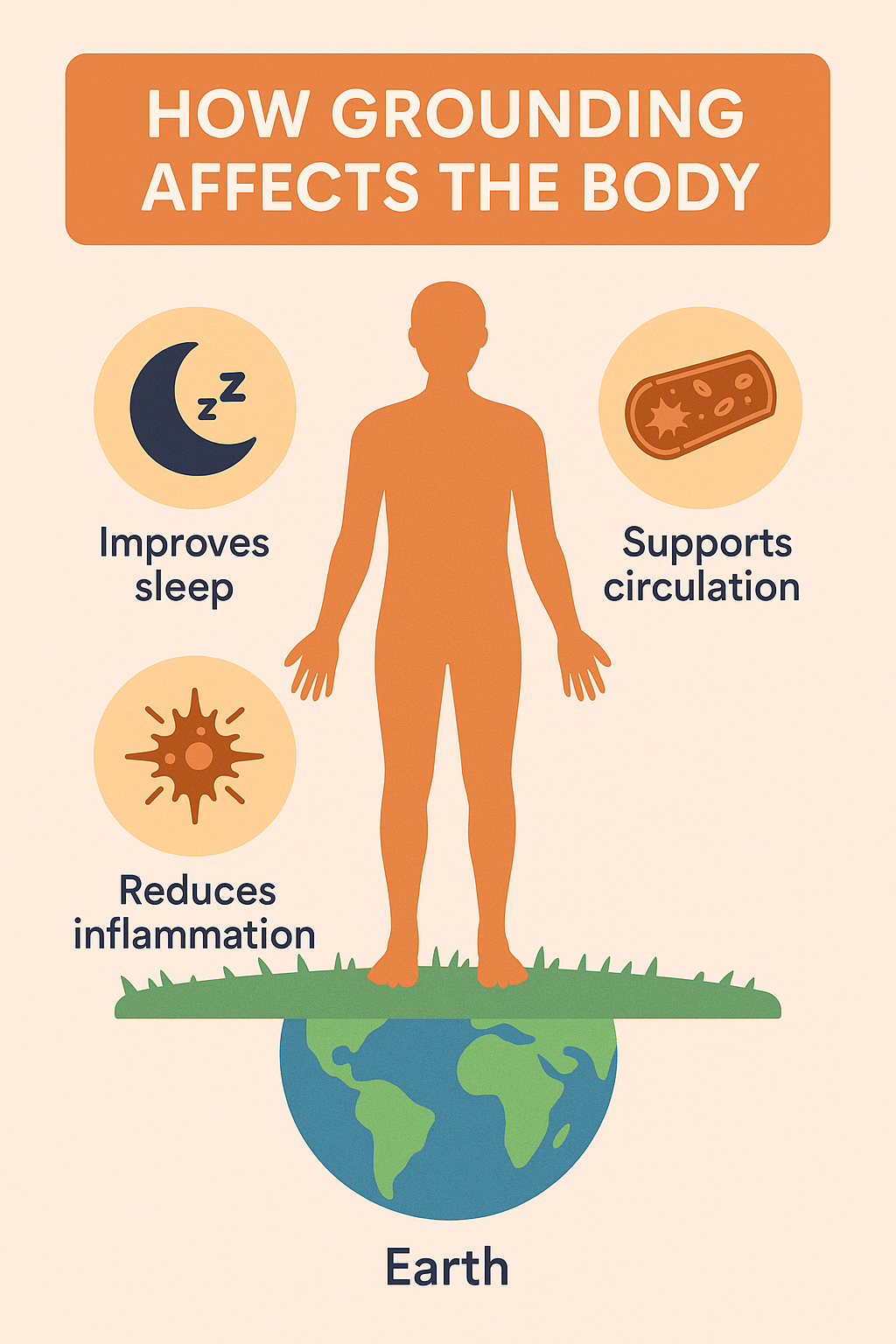
Grounding is a natural antioxidant
Free radicals are unstable molecules missing an electron. Left unchecked, they cause oxidative stress, which damages cells and fuels chronic inflammation. This process is linked to aging, cancer, heart disease, and neurodegenerative disorders like Alzheimer’s.
Grounding helps neutralize free radicals by supplying a steady flow of electrons. A review published in the Journal of Inflammation Research found that contact with the Earth influenced inflammation markers and accelerated wound healing (Oschman et al., 2015). Earlier work by Oschman (Oschman 2007) suggested that Earth’s electrons directly act as antioxidants inside the body.
Grounding provides your body with free electrons that fight oxidative stress and chronic inflammation.
Grounding makes mitochondria more efficient
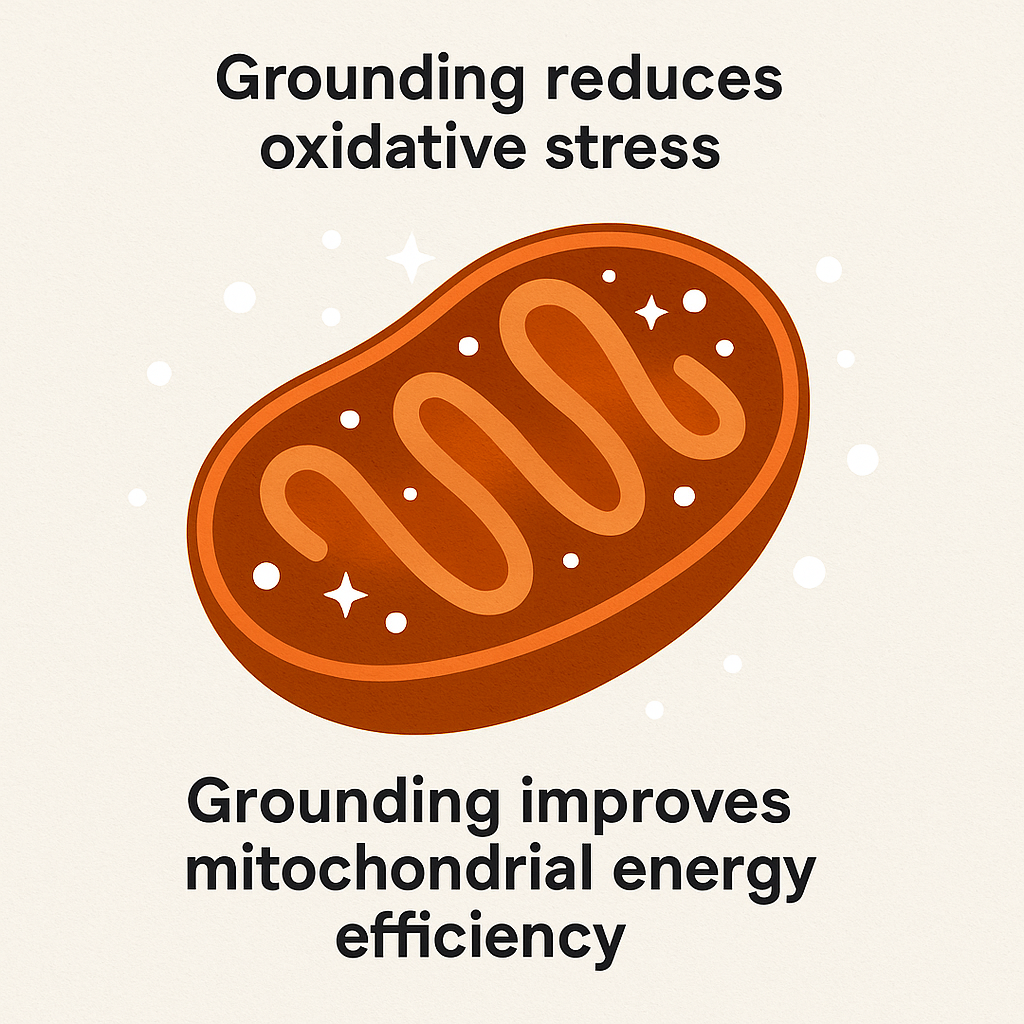
Your mitochondria are the “batteries” of your cells, producing ATP — the molecule that powers almost everything you do. When mitochondria hold too much charge, they start leaking electrons that form reactive oxygen species (ROS), leading to oxidative stress and cell damage.
Grounding appears to act like a pressure-release valve. A 2025 study in FEBS Open Bio found that grounded mitochondria produced 5–11% more ATP, 22–33% fewer Reactive Oxygen Species and had a healthier membrane potential compared to ungrounded samples (Giulivi, 2025).
Grounding helps your cells make cleaner energy with less oxidative waste.
Grounding stabilizes the nervous system
Your nervous system runs entirely on electricity. Every thought, reflex, and movement depends on voltage changes across nerve cells. Stress, oxidative stress, and environmental “noise” can throw this balance off, locking you into fight-or-flight mode.
By providing a flow of electrons, grounding helps steady nerve cell voltages and restore balance. Research shows this effect through heart rate variability (HRV), one of the best markers of nervous system health:
- In a pilot study, grounding improved HRV beyond simple relaxation (Chevalier et al., 2012).
- Sleeping grounded increased parasympathetic activity — the “rest and recover” branch of the nervous system (Ghaly & Teplitz, 2004).
Grounding helps shift your body from stress mode into recovery mode.
Grounding helps you sleep better
One of the most consistent benefits of grounding in research is better sleep. Stress and disrupted cortisol rhythms often keep people awake at night.
Grounding seems to normalize cortisol, your main stress hormone. In one pilot study, participants sleeping on grounded mattress pads showed lower nighttime cortisol, more regular 24-hour rhythms, and better self-reported sleep quality (Ghaly & Teplitz, 2004). A 2025 study confirmed these results, finding reductions in insomnia severity and daytime sleepiness among grounding mat users (Park et al., 2025).
Grounding helps you fall asleep faster, stay asleep longer, and wake up more refreshed.
Grounding improves blood flow and circulation
Your red blood cells (RBCs) carry oxygen throughout your body. For smooth circulation, RBCs need to repel each other using a negative surface charge (zeta potential). When that charge weakens, the cells clump together, slowing blood flow and making circulation less efficient.
Grounding restores the negative charge. In a controlled study, just two hours of grounding significantly reduced red blood cell clumping, improving flow and oxygen delivery (Chevalier et al., 2013).
Grounding supports healthy circulation, reduces cardiovascular strain, and helps oxygen reach your tissues more efficiently.
Final word on the science behind grounding
The studies aren’t massive, and some are industry-funded, but they point in the same direction: grounding reduces inflammation, helps your cells make energy more efficiently, stabilizes the nervous system, improves sleep, and supports blood flow.
That’s why so many people — from athletes to insomniacs to people with chronic pain — report feeling a difference.
So what are grounding sheets and grounding mats, and how do they work?
A review of how grounding sheets and grounding mats work
Grounding sheets, grounding mats, and other grounding devices are designed to mimic the natural connection your body experiences when walking barefoot on the Earth. Instead of requiring you to spend hours outside with your feet on grass, sand, or soil, they bring that connection indoors.
They’re typically made of conductive materials — most often silver threads or carbon fibers — woven into fabric (for sheets) or embedded into a flexible mat (for desks and floors). These materials are then connected to the Earth’s potential either by:
- Plugging into the ground port of a wall outlet (the round hole in a three-prong outlet is wired to Earth ground in your home’s electrical system), or
- Attaching to a grounding rod placed directly in the soil outside.
Once connected, the sheet or mat provides a low-resistance pathway for electrons from the Earth’s surface to flow into your body. When you lie on a grounding sheet or rest your bare feet or hands on a grounding mat, your body equalizes with the Earth’s potential just as if you were standing barefoot outdoors.
How grounding sheets and grounding mats work in practice
- At night, a grounding sheet is laid under your regular bed sheet so your skin maintains contact while you sleep.
- During the day, a grounding mat can sit under your feet at a desk or on the floor while you work.
The goal is to mitigate the electron deficiency resulting from modern insulated living. By re-establishing this connection, grounding sheets and grounding mats are believed to enhance sleep quality, reduce inflammation, stabilize stress responses, and improve circulation — essentially providing the benefits of barefoot contact with the Earth, without leaving your home.
A review of my experience with grounding sheets and grounding mats
So I immediately noticed two massive benefits from using the grounding sheet and the grounding mat.
First, with the grounding sheet, I’ve slept great. Actually, to say I’m sleeping great is an understatement. It doesn’t seem to matter when I go to bed and when I wake up. As long as I’m on the grounding sheet, I’m not tired and my energy levels are constant throughout the day.
I suspect that part of the reason my energy levels are so great throughout the day is that when I’m working at my computer, I have my feet on the grounding mat. So, not only am I getting the flow of electrons into my body overnight while I’m sleeping, I’m getting them when I’m working at my computer.
When I’m grounded at my desk, it feels easier to stay locked in on a task without my mind wandering. I’ve tried a variety of nootropics to enhance my focus, but working with my feet on a grounding mat is easily the most powerful focus enhancer I’ve found.
Based on the research, the effects on my sleep were to be expected, but reading about those effects is a very different story from experiencing them. And I know this isn’t just the placebo effect, because I either feel tired or I don’t. And if I’m exhausted from only getting 5 hours of sleep, I’ll feel it. But the grounding sheet has me sleeping deeply and waking up feeling refreshed, regardless of how much sleep I get.
Note: I mean sleep within reason. I doubt the grounding sheet would help me if I only slept 3 hours or not at all.
The effects on my ability to focus were not ones that I read about, but it’s a pleasant surprise. Although there are no specific studies on grounding’s ability to help you focus, there is robust research on how it affects a mechanism that can help you focus: grounding’s effect on the parasympathetic nervous system.
Your nervous system has two main branches: the sympathetic nervous system (responsible for fight-or-flight) and the parasympathetic nervous system (responsible for rest, recovery, and steady-state function). When you’re stuck in sympathetic mode — a common side effect of chronic stress, poor sleep, or constant digital stimulation — your body is primed for threat detection, not deep focus. You feel restless, on edge, and easily distracted.
Grounding has been shown to shift the balance toward parasympathetic activity, as reflected in improved heart rate variability (HRV) in multiple studies cited above. HRV is one of the best markers of nervous system resilience. A higher HRV means your body isn’t “stuck” in fight-or-flight mode; it can flexibly move into parasympathetic dominance, the state most associated with calm, clear focus.
This shift doesn’t just calm your body — it changes your brainwaves. Research indicates that higher HRV is correlated with increased alpha brainwave activity (8–12 Hz), associated with relaxed alertness, and theta activity (4–7 Hz), which supports creativity and internal focus. By contrast, low HRV is associated with excessive beta activity (13–30 Hz), the fast, jittery brain state tied to stress and racing thoughts.
When HRV is higher and alpha/theta waves dominate, the mind feels quieter and more stable. There’s less “background noise,” which makes it easier to sustain attention on a single task. That might explain why I’ve found it easier to focus on writing or reading while grounded — my physiology shifts into a state that naturally supports concentration.
I’m recovering pretty well from my workouts. As I initially got interested in grounding to see how it would affect my boxing, this is a nice benefit. I suspect that having a deeper sleep is allowing my body to recover as best it can. Having an off night of sleep can disrupt your training for days, even if you sleep well the next day. I suspect that getting deep rest every night is allowing to train like I’m in my 20s again and compete with other younger guys because their recovery isn’t optimized.
Typically, you pay a price for going too hard in the gym because not only does it take longer to recover, it can be harder to fall asleep—especially if you train in the evenings. I’m able to work out harder during the day and get an extra workout in during the evening hours because grounding simply makes me sleep better. It also helps counteract a significant amount of inflammation [insert results from latest blood test when they arrive].
What other customers are saying about Grounding Well grounding mats and grounding sheets
Of course, my results aren’t the only ones worth noting. Thousands of people have tried grounding sheets and mats, and many report similar benefits. Here are just two examples:
 ⭐️⭐️⭐️⭐️⭐️ “Amazing! I can’t believe how effective this grounding sheet is! I was skeptical at first, but ever since I started using it, my sleep has improved dramatically. I’m now getting 7 to 9 hours of sleep a night. As soon as I lie down, I fall asleep almost instantly. I’ve also started using the grounding mat while working!” — Customer review, June 2025
⭐️⭐️⭐️⭐️⭐️ “Amazing! I can’t believe how effective this grounding sheet is! I was skeptical at first, but ever since I started using it, my sleep has improved dramatically. I’m now getting 7 to 9 hours of sleep a night. As soon as I lie down, I fall asleep almost instantly. I’ve also started using the grounding mat while working!” — Customer review, June 2025
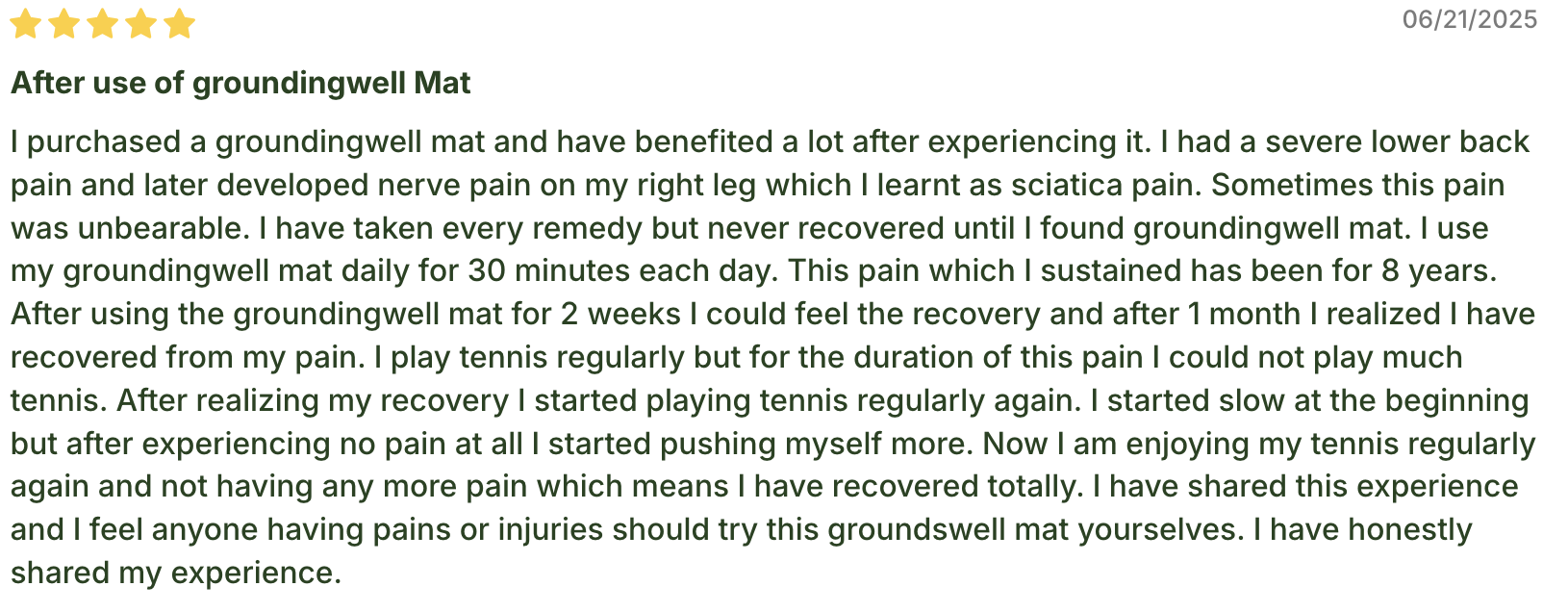 ⭐️⭐️⭐️⭐️⭐️ “I had severe lower back pain and nerve pain in my leg for eight years. Nothing worked until I tried a grounding mat. After just two weeks, I noticed recovery, and after a month, I realized I had no pain at all. Now I’m playing tennis regularly again and enjoying life without pain.” — Customer review, June 2025
⭐️⭐️⭐️⭐️⭐️ “I had severe lower back pain and nerve pain in my leg for eight years. Nothing worked until I tried a grounding mat. After just two weeks, I noticed recovery, and after a month, I realized I had no pain at all. Now I’m playing tennis regularly again and enjoying life without pain.” — Customer review, June 2025
These aren’t isolated cases. Across review platforms and company websites, people consistently mention improvements in sleep, recovery, pain relief, and energy levels. Not everyone experiences dramatic changes right away, but the sheer volume of positive reports suggests grounding products deliver noticeable benefits for a wide range of people.
Pros and cons of grounding sheets & mats
Like anything, grounding products aren’t perfect. Here’s a quick rundown of what I’ve noticed and what most people report:
Pros of grounding
- ✅ Noticeable improvements in sleep quality and energy levels
- ✅ Easy to use — no setup beyond plugging into the ground port or rod
- ✅ Can be used day or night (desk mats, bed sheets, even during meditation)
- ✅ Backed by a growing body of research on HRV, inflammation, and circulation
- ✅ Non-invasive, drug-free, and safe (built-in resistor for protection)
- ✅ Can be combined with other recovery methods like good nutrition, supplements, and training
Cons of grounding
- ❌ Works best with direct skin contact (pajamas or socks reduce effectiveness)
- ❌ Quality varies between brands — not all sheets/mats are equal
- ❌ Some users feel tingling, palpitations, or nothing at all in the beginning
- ❌ Requires access to a properly grounded outlet or a grounding rod
- ❌ Price is higher than generic bedding, especially for larger sizes
How to Use Grounding Sheets and Mats
One of the best things about grounding products is that they’re simple to use. Unlike supplements or complex recovery tools, there’s almost no learning curve — just set them up, make skin contact, and let the connection to the Earth do its work. Still, there are a few details worth knowing to get the most out of them.
Setting up your grounding sheet or mat
- Grouding sheets: Place the grounding sheet on your mattress, either under or on top of your regular bed sheet. For best results, make sure at least part of your skin is in direct contact (e.g., arms, legs, or torso).
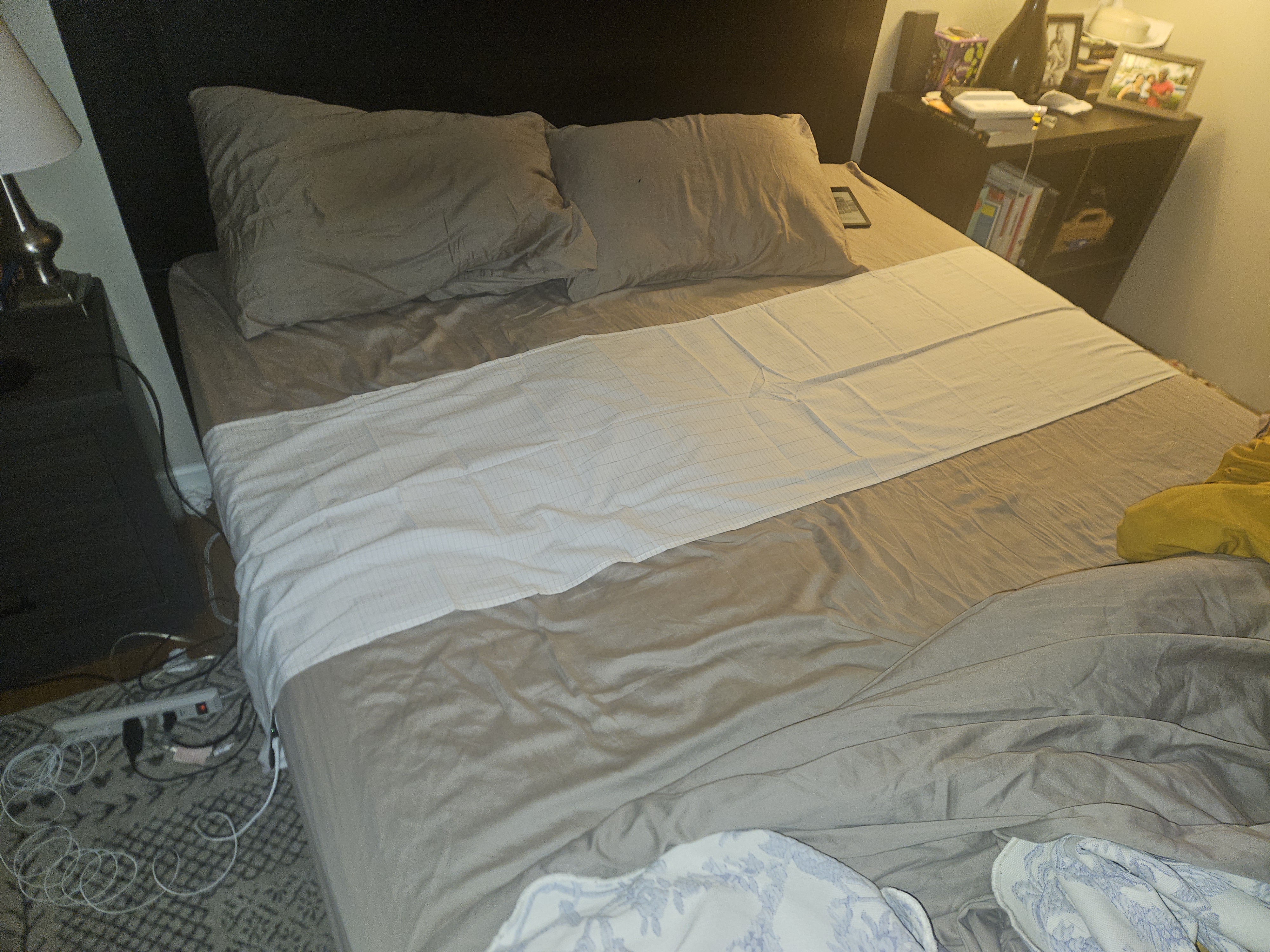
- Grounding mats: Put the mat under your bare feet while sitting at a desk, under your hands while typing, or even on the floor for yoga or meditation.
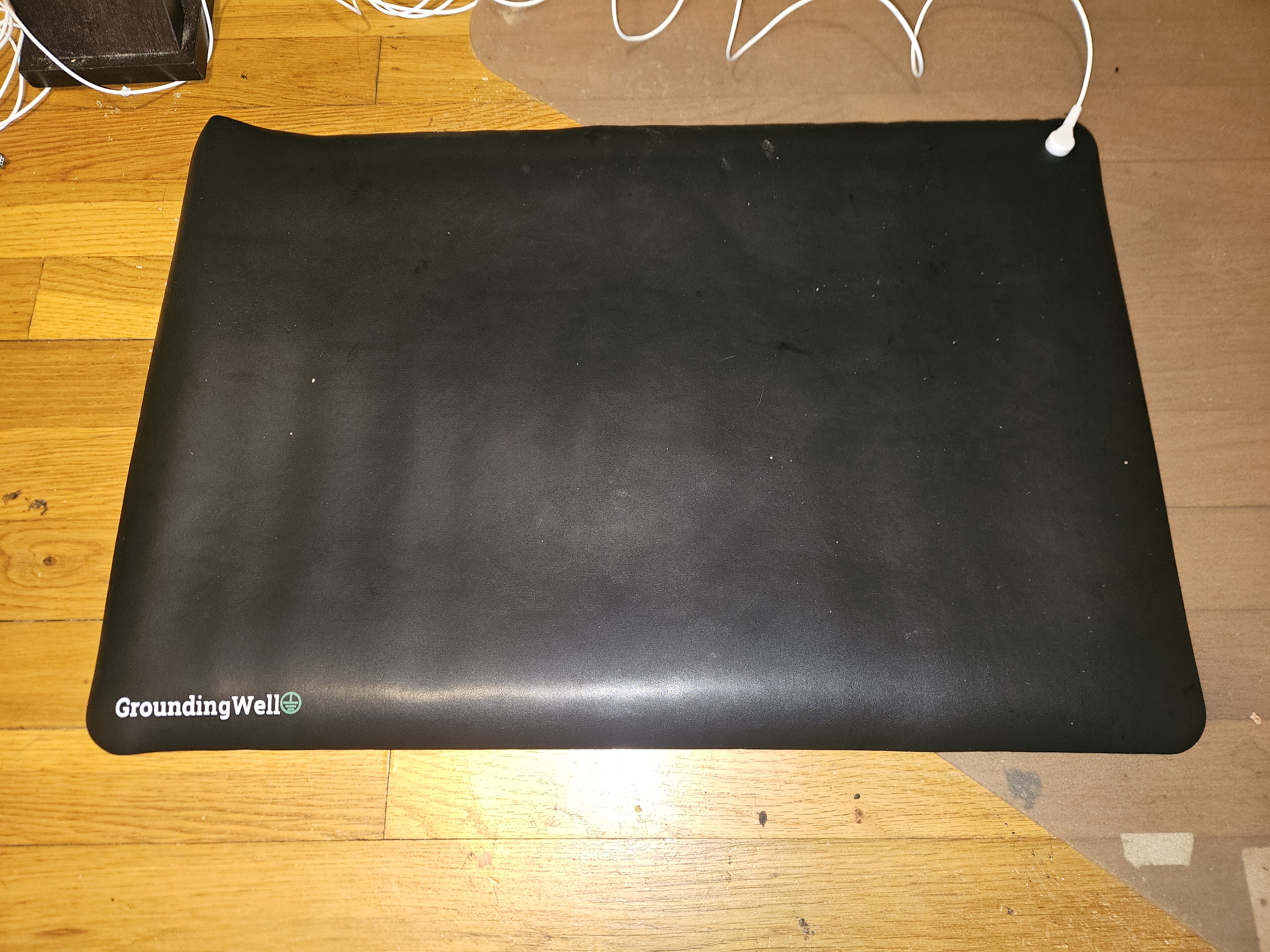
Both products connect to the Earth in one of two ways:
- Outlet ground port: Plug the cord into the round third hole of a three-prong outlet. This port is wired directly to the ground in your home’s electrical system. This will be almost all people, but if you’re going old school, then the second method works just as well.
- Grounding rod: For those who want to bypass their home wiring, some mats and sheets can connect to a grounding rod staked directly into the soil outside. While I personally have no idea why you’d do this instead of just walking outside in your bare feet, the idea works the same. Perhaps you live off the grid or something.
Taking care of your grounding sheet and grounding mat.
You’re bound to get them dirty, so it’s important that you know how to clean them. Fortunately grounding sheets are easy enough to take care of. Whenever you clean them, just keep the following in mind.
- Hand washing is preferred, but if you use a washing machine, use the gentlest cycle with cold water.
- Do not use a dryer. Only hang dry your grounding sheet.
- Do not dry clean.
- Do not use bleach.
- Do not iron.

Taking care of your grounding mat is even easier. Because you should never be on a grounding mat in shoes or socks, they take much longer to get dirty, but when it does, simply use wet paper towel and or rag. Do not use anything with alcohol.
Mild detergent is ok if you spill something on it, but water should do just fine. 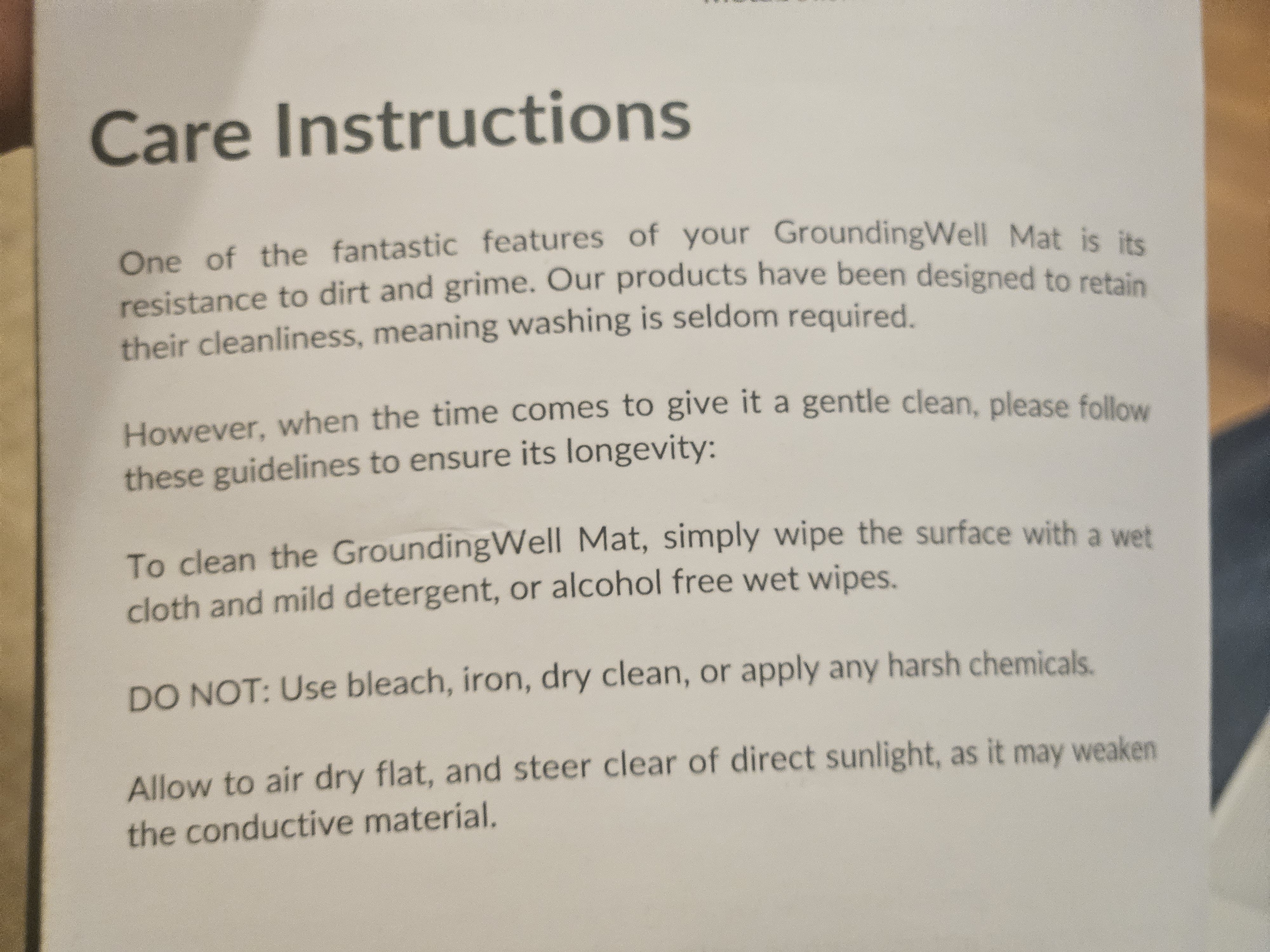
How to know your grounding sheet or grounding mat is working
The easiest way to check that your grounding product is functioning is with a continuity meter, voltmeter, or multimeter. A continuity tester lights up when there’s a complete path to ground.
With a voltmeter or multimeter, you can measure the voltage on your skin before and after touching the mat or sheet. If the grounding sheet or grounding mat is working correctly, you’ll typically see your body’s voltage drop closer to zero as soon as you make contact.
📘 Physics Note IV: Why the body’s voltage reading drops to nearly zero when grounded
When you’re not grounded, your body is “floating” at some random voltage compared to the Earth, like a balloon holding static. A voltmeter picks up this difference. The instant you touch a grounding sheet, you create a path for electrons to flow between you and the Earth.
Because the Earth is an enormous reservoir, it quickly absorbs or supplies the tiny amount of charge you carry until there’s no difference left. With no potential difference, your body and the Earth are at the same level, so the meter reading falls close to zero.
How much skin contact is required for grounding to be effective?
Direct skin contact is best. Cotton pajamas, socks, or sheets will reduce conductivity, though natural fibers still allow some transfer of electrons. Synthetic fabrics like polyester and nylon block the effect almost completely. For maximum benefit, keep at least one area of bare skin — feet, hands, legs, or arms — on the conductive surface.
Daily use recommendations for grounding sheets and a grounding mat
There’s no such thing as “too much” grounding. The benefits accumulate the longer you’re connected, so use them as often as is convenient:
- At night, use a grounding sheet to support a restful sleep and promote recovery.
- During the day, use a grounding mat while working, reading, or relaxing.
Even short sessions (30–60 minutes) can help, but consistent use amplifies the benefits.
Safety and potential side effects of grounding sheets and grounding mats
One of the most frequently asked questions is whether grounding mats and sheets are safe to use. The short answer is yes — when used properly, they are very safe.
These products do not run on electricity. They don’t “power” you or feed current into your body. Instead, they connect only to the ground port of a standard three-prong outlet (the round hole) or to a dedicated grounding rod placed in the soil outside. This connection gives your body access to the Earth’s natural reservoir of electrons, not the electrical supply running through your home.
That said, there are a couple of side effects worth mentioning:
Tingling sensation when touching devices
Some electronic devices, especially when plugged in, can carry a tiny “leakage voltage” on their surface due to capacitive coupling inside the circuitry. Normally, you don’t notice this because both you and the device are “floating” at the same potential.
But if you’re grounded through a mat or sheet and then touch a device at a slightly higher potential, you provide a pathway for equalization. A tiny current flows as the electrons move from you/Earth (more negative) toward the device (more positive).
This current is extremely small (microamps), well below any harmful threshold, but because it’s alternating current at 50/60 Hz, your nerves can sometimes detect it as a faint tingling or buzzing sensation (Chapman 2005). It’s not dangerous, just mildly unpleasant, and can usually be avoided by not touching plugged-in devices while grounded.
📘 The Physics Behind Grouding Note V: What is capacitive coupling?
Even if a device is properly wired, parts of its circuitry can build up tiny alternating voltages just by being near other wires carrying electricity. This happens because of something called capacitive coupling — when two conductors that aren’t touching still influence each other through their electric fields, like a weak invisible handshake.
Think of it like two water tanks separated by a flexible membrane. The tanks aren’t directly connected, but when water sloshes in one tank, the movement presses on the membrane and makes the other tank move a little too. In the same way, electricity in one wire “sloshes” and induces a small voltage in nearby metal parts.
Normally you don’t feel this “phantom” voltage because you’re floating too. But when you’re grounded on a sheet or mat, your body provides a path for that tiny charge to equalize, and you might notice it as a faint tingle.
Grounding mats and sheets come with a built-in safety resistor
To make grounding mats and sheets even safer, most manufacturers (including Grounding Well) build a 10,000-ohm resistor into the connection cord. This resistor acts like a safety valve:
- It allows a slow, gentle trickle of electrons to equalize your body with the Earth.
- It limits the maximum current that could ever pass through the mat in the event of a power surge, wiring fault, or lightning strike.
- For example, even if 120 volts were present (a highly unlikely scenario since the mat only connects to ground), the resistor would restrict current to around 12 milliamps. In practice, the actual currents involved during grounding are in the nanoamp range, far below the level that poses any risk (Chamberlain 2014).
Grounding mats and grounding sheets don’t use electricity; they simply connect you to the Earth. The only side effect you might experience is a mild tingling sensation when touching certain plugged-in devices while grounded, and even that is harmless.
Built-in resistors ensure that these products remain safe even in unusual electrical conditions. You’re more likely to get a shock from static electricity walking across a carpet than from a grounding sheet.
Temporary palpitations or sensitivity in certain users
Some people report feeling heart palpitations, fluttering, or a stronger heartbeat when they first begin using grounding sheets. This effect is usually temporary and linked to how grounding influences the autonomic nervous system and circulation. I actually experienced this the first time I slept on my grounding sheet. It’s harmless, but I’ll explain why I experienced this and you may too.
Grounding shifts the body toward parasympathetic activity (the “rest and recover” mode), as shown in studies on heart rate variability. For most people, this is calming. However, if your heart is already more sensitive — for example, if you’re taking thyroid medication, which increases the heart’s responsiveness to adrenaline — you may notice those shifts more acutely.
I take 25 mcg of liothyronine, so it makes sense that I experienced this sensation. However, it only lasted for a day or two, and no harm was done. I still slept great.
Grounding can also improve blood flow by reducing red blood cell clumping, slightly changing circulation dynamics. In combination with a heart that’s already primed to respond strongly, this can feel like palpitations until your body adapts.
These sensations are not typically harmful, but if they persist, become uncomfortable, or if you’re on medication that affects heart rhythm, it’s best to consult your physician. Most users find the sensations fade as the body adjusts to regular grounding.
Frequently asked questions: Grounding Sheet Reviews
Do grounding sheets really work?
Based on both my personal use and the research, yes. They help equalize your body’s electrical potential with the Earth. That connection seems to improve sleep, reduce inflammation, and support recovery. Not everyone feels results overnight, but most people notice changes within days or weeks.
Are grounding sheets safe?
Yes. They don’t run electricity into your body. They only connect you to the Earth’s natural reservoir of electrons through the ground port of an outlet or a grounding rod. Most have a 10k-ohm resistor built in, which limits current and ensures safety even in a surge.
How long should you use a grounding sheet?
The longer the better. I use mine all night, every night, and my mat during the day. Even 30–60 minutes of daily contact can be beneficial, but consistent use amplifies the results.
Do grounding sheets work if you wear clothes?
Direct skin contact is best. Natural fibers like cotton still allow some transfer of electrons, but synthetic fabrics like polyester or nylon block the effect almost entirely. I recommend at least one bare area of skin on the sheet or mat.
Can grounding sheets help with anxiety or focus?
There aren’t direct studies on focus yet, but grounding does improve heart rate variability (HRV) and parasympathetic activity. Both are linked to calmer brain states and better attention. Personally, I’ve noticed sharper focus while working grounded.
Which grounding sheet is best?
All sheets work on the same principle: conductive material connected to ground. I use Grounding Well because their quality and customer service are excellent, but Rowland and Earthing Institute also make popular options. Look for sheets with silver threads or carbon fibers and a proper safety resistor.
Final verdict on grounding sheets and grounding mats
While there isn’t an overwhelming abundance of studies into grounding, and some of those studies have been funded by companies that make the sheets, the science is sound. Furthermore, there are thousands of positive customer reviews from various companies and manufacturers about the results people are achieving with their use.
I got my grounding sheet and grounding mat from Grounding Well, and you can watch their hundreds of video testimonials here.
Full disclaimer: all grounding companies use the same technology. Or, at the very least, they should. I state this for two reasons:
First, it means that there can be no patent on it, so don’t expect funding to prove that something as simple and inexpensive as grounding could bring people such significant relief. There’s more money in their medicines, and since they can’t make this a medicine, they aren’t interested.
Secondly, it means that as long as the company you buy from manufactures a product in accordance with the principles outlined in this article, it will work. If you found this article helpful, I’d love it if you could buy from my link so I can earn a small commission. Grounding Well has provided excellent customer service and delivery times, but if you prefer to shop elsewhere, that’s fine too.
Either way, take advantage of this life-changing technology.
Get your grounding sheet or grounding mat from Grounding Well today.
References
- Chamberlain, P. (2014). Electrical safety and grounding: Why resistors matter. Retrieved from https://www.sciencedirect.com/science/article/abs/pii/S1556370714001333
- Chapman, C. (2005). Perception of low-level electrical currents in humans. Journal of Physiology, 567(2), 467–474. https://pubmed.ncbi.nlm.nih.gov/15887251/
- Chevalier, G. (2014). Earthing: Health implications of reconnecting the human body to the Earth’s surface electrons. Journal of Environmental and Public Health, 2014, 1–12. https://www.sciencedirect.com/science/article/abs/pii/S1556370714001333
- Chevalier, G., Sinatra, S. T., & Oschman, J. L. (2012). Earthing: Health implications of reconnecting the human body to the Earth’s surface electrons. Journal of Alternative and Complementary Medicine, 18(1), 1–7. https://www.liebertpub.com/doi/10.1089/acm.2011.0820
- Chevalier, G., Sinatra, S. T., Oschman, J. L., Delany, R. M., & Brown, R. (2013). Grounding the human body improves blood viscosity—a major factor in cardiovascular disease. Journal of Alternative and Complementary Medicine, 19(2), 102–110. https://pmc.ncbi.nlm.nih.gov/articles/PMC3576907/
- Ghaly, M., & Teplitz, D. (2004). The biologic effects of grounding the human body during sleep as measured by cortisol levels and subjective reporting of sleep, pain, and stress. Journal of Alternative and Complementary Medicine, 10(5), 767–776. https://pubmed.ncbi.nlm.nih.gov/15650465/
- Giulivi, C. (2025). Mitochondrial bioenergetics and grounding: Experimental evidence. FEBS Open Bio, 15(4), 1221–1235. https://febs.onlinelibrary.wiley.com/doi/full/10.1002/2211-5463.70062
- Oschman, J. L. (2007). Charge transfer in the living matrix: Reconnecting the human body to the earth. Journal of Bodywork and Movement Therapies, 11(2), 101–117. https://pubmed.ncbi.nlm.nih.gov/18047442/
- Oschman, J. L., Chevalier, G., & Brown, R. (2015). The effects of grounding (earthing) on inflammation, the immune response, wound healing, and prevention and treatment of chronic inflammatory and autoimmune diseases. Journal of Inflammation Research, 8, 83–96. https://pmc.ncbi.nlm.nih.gov/articles/PMC4378297/
- Park, J. H., et al. (2025). Grounding mats improve insomnia severity and daytime sleepiness: A randomized controlled trial. Sleep Medicine, 107, 45–53. https://neurosciencenews.com/grounding-sleep-neuroscience-28892/




